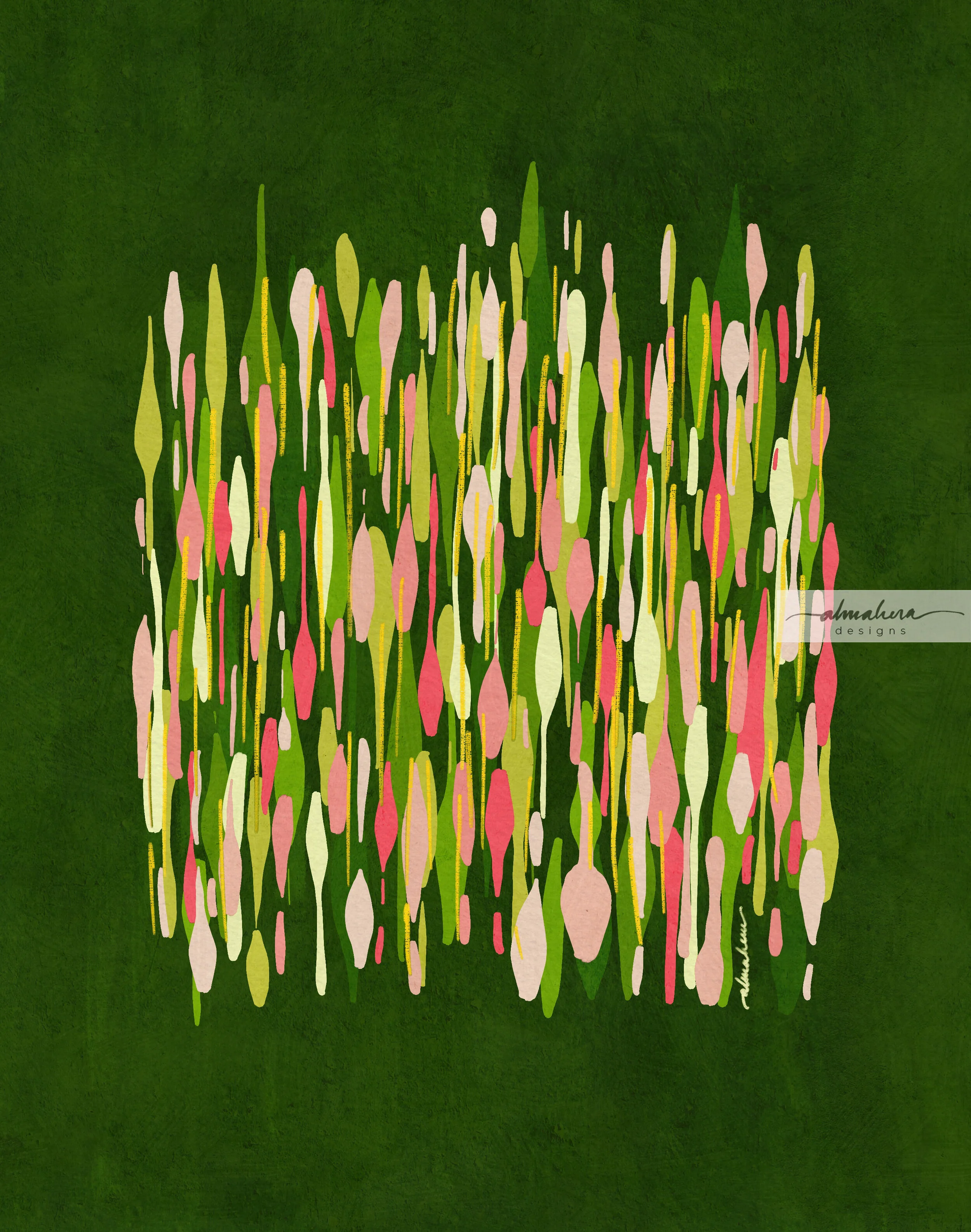There's a house somewhere in our neighbourhood that used to have a beautifully lush Akar Dani plant cascading over their back wall. I used to walk past it in the mornings, and every time I did, I felt happy. The vibrant fuschia and pale pink colours of the flowers lifted my spirits, and it inspired me to create the Akar Dani series, a collection of abstract pieces centred around the colour palette of the Akar Dani flowers; a range of vibrant pinks and deep emerald greens.
Akar Dani flowers
It was also an opportunity for me to play around with a newly acquired set of Procreate gouache brushes from one of my favourite illustrators, Lisa Glanz.
"Brush Strokes #1" - The first piece in the series. If the heavens cracked open and rained Akar Dani flowers, this is how I imagine it would look like.
“Brush Strokes #1”
"Brush Strokes #2" - A variation on the same theme, but I wanted it to look a bit more gloopy and drippy; a bit like raindrops racing down a window pane.
“Brush Strokes #2”
"Stripes" - Like a lot of people, I love me some good stripes! I initially painted stripes of equal width, thinking that the colours would be enough to lend it character. It still felt boring, though, and I started playing around with different widths until I decided to just let the lines go all over the place, and create wonky, lopsided stripes. I added random textures and patterns here and there - I wanted it to be a fun piece; something chaotic and colourful, something that would brighten up your mood.
“Stripes”
"Fish/Lilypads" - I enjoyed making "Brush Strokes #2" and I wanted to create another piece in the same vein, but one that felt a bit calmer and more deliberate. As I was painting this, I thought it looked like a school of (green) fish swimming through the (green) ocean, and went along with that image in my mind. After it was completed though, it looked more like lily pads.
“Fish/Lilypads”
"Sidewalk" - By this time I was done playing around with random brush strokes, but I was still obsessed with the Akar Dani colour palette. I wanted to create something slightly more “structured”, but still organic and abstract. I was inspired by the pavement tiles near the neighbourhood shops. Like “Stripes”, this piece started out somewhat geometrically correct, but morphed into organic shapes and a riot of colours and patterns.
“Sidewalk”
"Sidewalk" was supposed to be the last piece in this series… until one morning, I noticed a blank white wall where the luscious Akar Dani plant used to be. The owners of the house had pruned it, cut it down, with nary a trace to be seen or found. I was sad to see it gone; it used to brighten up my mornings so. I decided then that I needed to create another piece, one that actually featured the flower in some form. For some reason I wanted it to be a repeat pattern. The result was not one - but two patterns in a Damask style. I couldn’t decide between the two, so I kept both, and named them, imaginatively, “Akar Dani I”, and “Akar Dani II”.
“Akar Dani I”
“Akar Dani II”
Unlike “Sidewalk”, these two patterns were really the final pieces in the series. I’d had my fun with the theme, and it was time for me to move on and explore other themes, other colours, and other tools. Once this lockdown is lifted and more businesses are allowed to operate again, I’d like to make these into art prints - I think they’d look nice.
Until next time, stay safe!
-A-













